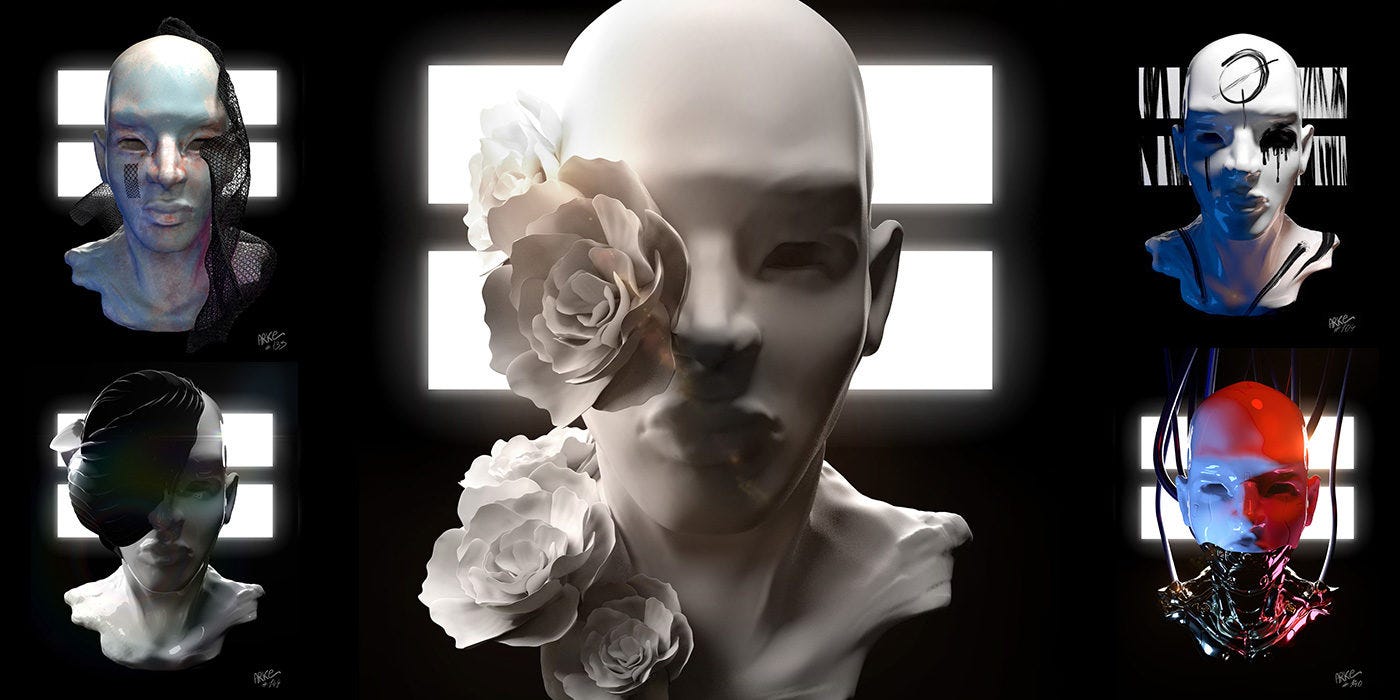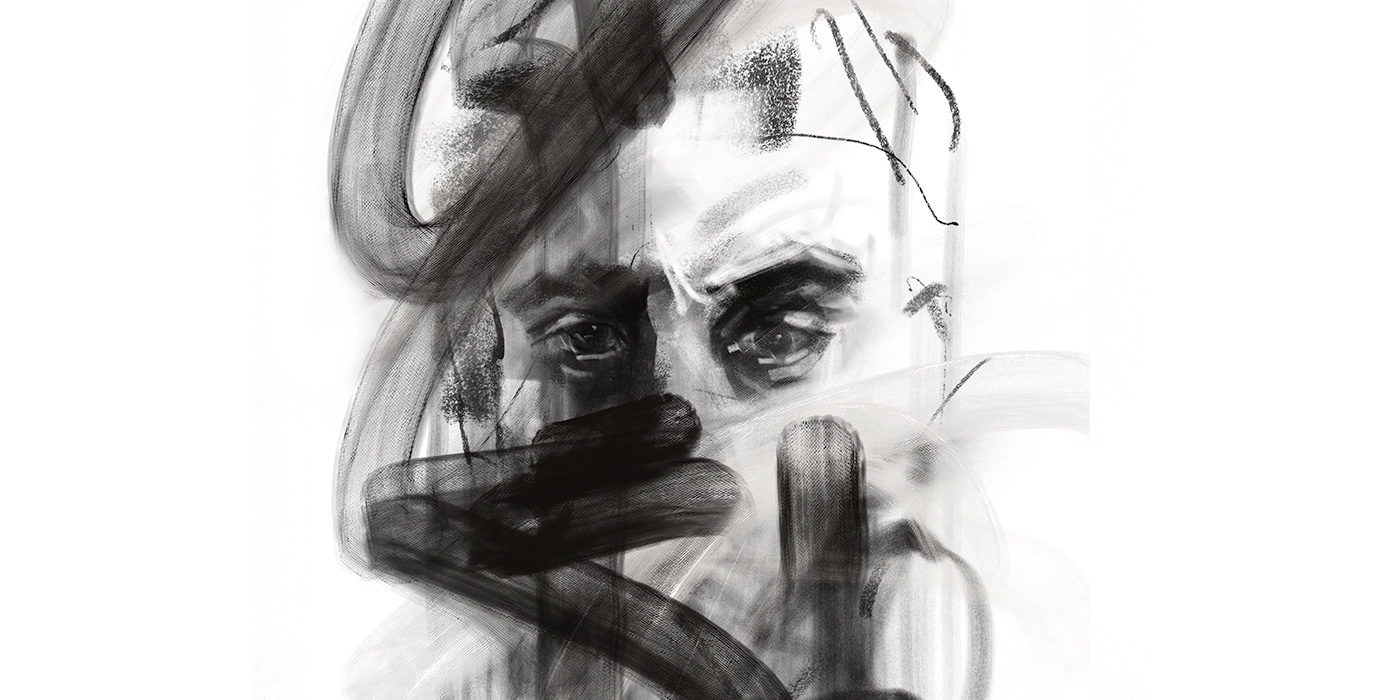NFT Edition: Is This the Future of Digital Art? A Conversation with Arke
How the crypto artist blends chaos, creation, and blockchain.
What happens when an artist decides to break all the rules of digital art? That's exactly what we're exploring today with Arke, a crypto artist whose philosophy and vision is creating a fascinating space in the NFT world.
Think of Arke as a digital alchemist—someone who's taking the raw materials of blockchain technology and transforming them into something deeply emotional and meaningful, challenging everything we think we know about how art works in the digital age.
What makes his perspective particularly interesting? While many see NFTs as just digital certificates of ownership, Arke sees them as something more profound: Cultural touchpoints that mark moments in our collective digital journey. He's got this refreshing take on creativity too:
Embrace the chaos, follow your intuition, but never lose sight of your artistic truth.
In this conversation, we're diving deep into Arke's creative world to understand how he's bridging the gap between pixels and emotions, between blockchain and brushstrokes. If you've ever wondered about the future of art in our increasingly digital world, you won't want to miss this.
The Soul in the Machine: Arke's Vision for Digital Art
Interviewer: Arke, thank you so much for taking the time to speak with us today.
Arke: Thank you for having me.
I: You’re known as a groundbreaking crypto artist, and I’m really excited to explore your creative process and philosophy. So, let’s start with a broad question: In your view, where does the "soul" of digital art reside? Is it in the artist's process, the viewer's experience, or somewhere in between?
A: I believe the soul of art lies between the viewer's gaze and the artwork itself, with the artist breathing life into it through intention. Generative art, for example, is just one form of expression, but what defines art is that intention. If we create with the purpose of making art, then it becomes art. It doesn’t need to be noble. It can be brutal, delicate, or even just a simple line. The observer plays a crucial role in appreciating it, discerning the artist's intent, or being influenced by fake discourse and marketing focused art.
I: I find it fascinating to think your piece can find thousands of different interpretations based on the observer. But I would agree that intention from both sides is a big part of that “soul”. You mentioned generative art. How do you see AI art fitting into the broader evolution of artistic expression?
A: There are as many forms of art as there are artists, as many ways to express oneself, or to express nothing at all, as many types of messages or total suppression of message. Generative art is one of those forms of art.
I think what defines art is first and foremost intention. If we create with the intention that it is art, then it will be art; it has no other purpose than to be art. We just need to stop thinking that art must necessarily be noble. It can be brutal, delicate, complex, or just a simple line. It’s up to the observer to appreciate it or not, to discern the artist's intention or to be completely manipulated by accepted discourse or marketing and simply agree. Furthermore, it’s up to each person.
So where is the “soul” of art? Normally, it lies between the viewer's gaze and the artwork itself, breathed into it by the artist. If the artist is a monkey, can we not appreciate it? Or do we simply appreciate something trivial and superficial?
I believe there are several levels of appreciating art. One is in relation to the artwork itself, its aesthetic and visual approach, and what it conveys. The other is in understanding the artist's overall process.
Some simply appreciate that someone had an idea; others will appreciate that an artist learned how to express that idea with technique, suffered in the effort of learning it, and uses it as a strength. It doesn’t matter; I don’t think one replaces the other. Everything in this world is based on attraction and repulsion in cycles of trends. When a trend becomes too dominant, people will seek to go against it through saturation.
Before AI-generated images, we could already reflect on movements like "ready-made," conceptual art, and pop art in its commercial and mass form. If this occupies an important place in what is promoted by institutions, it is up to us to show that we can do something else, and if we are not chosen by the pseudo-elites of the field, we will still have done what seemed right to us. Everyone is free to do things and to form their own judgment about them.
The only thing that bothers me in life is when people swallow discourses without analyzing their deep substance, accepting them due to social convention, intellectual laziness, or worse, intellectual dishonesty.
“If we create with the purpose of making art, then it becomes art.”
I: Authenticity is something I relate to emotion and humanity, something many would argue digital art doesn’t have. If you were to identify one emotion that you think the blockchain world lacks, what would it be? And if you could create an artwork to evoke that emotion, what would it look like?
A: Honestly, with so many artists and works across different blockchains, I don’t see a lack of emotion. There’s such diversity in themes and styles that no barriers really exist. I believe everything is being explored in its own way.
I: (laugh) It’s incredible to hear that optimism about the range of emotions expressed in digital art. Some people feel NFTs can be isolating, emphasizing digital ownership over human connection. How do you approach creating work that fosters an emotional connection with the viewer?
A: The connection is with the artwork itself, not necessarily the medium. Digital art has the unique ability to exist independently across devices, but the human aspect can come alive in crypto exhibitions and events, where artists and collectors interact. And for those seeking something tangible, there’s always the option to print artworks or create signed editions.
On ephemeral work, time, and legacy
I: Speaking of blending mediums, imagine a future where sound is as essential to NFTs as visuals. What soundscape or music would you pair with your artwork, and why?
A: I actually had the chance to combine sound and visuals for a video project displayed on four giant screens at the NFC2023 event in Lisbon. For that, I used my own musical compositions. Composition is something I’ve set aside for now, but I might return to it later. It’s an area that allows for even deeper emotional connection with the audience.
I: I love that you are exploring different creative dimensions. That must have been an amazing experience. But it does make me wonder if digital art had a “lifespan” and could fade over time, would that change your creative approach?
A: That’s an intriguing idea. I’ve thought about creating an image project that compresses into a .jpg repeatedly each time it’s viewed, eventually deteriorating with digital artifacts. It was just an idea, but I’ve worked with impermanent mediums like charcoal, so I appreciate the soothing, immutable nature of digital art.
"Look at me and forget me, so you can have the pleasure of seeing me again for the first time tomorrow."
I: I always find fascinating the idea of time and art, and the legacy you leave behind. So, let me ask you, if you could collaborate with any artist, living or dead, to explore ideas like this, who would it be?
A: Oof (laughs). I’d say Rodin, for a collection about human nature. His work captures such depth of emotion and physicality, and it’s something that I’m trying to do with my digital sculptures too, when I’m working on 3D artworks.
I: Rodin would be an amazing partner for exploring human nature in a modern context. Now, thinking of future generations and legacy, if NFTs could outlive us, what would you hope your work communicates to people hundreds of years from now?
A: My work tries to express basic emotions, often ineffable ones. I prefer when a piece doesn’t need a description to be appreciated, though I do include text sometimes to highlight symbolism and give the referential keys. What future generations take from my work depends on their willingness to see. It’s difficult to predict their moral values or philosophies, as these change so much over time.
I: I guess we go back to intention and the openness to interpretation. Before we wrap up, if your art could speak a single sentence to anyone who views it, what would it say?
A: "Look at me and forget me, so you can have the pleasure of seeing me again for the first time tomorrow."
I: Beautifully said. Thank you, Arke, for sharing your thoughts and taking us into your world of digital art. It’s been an honor, to hear your perspective and see how you balance that chaos, intention, and creativity in such a dynamic space.
A: Thank you, it’s been my pleasure!









